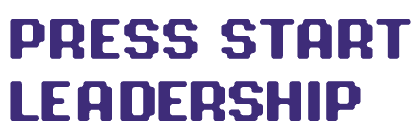Mastering the Growth Transition without Losing Your Game’s Authentic Spirit
In the world of video game development, there’s perhaps nothing more enchanting than the tale of a small indie developer blossoming into a major AAA studio. We’ve seen it happen, time and again. But with growth come challenges, particularly the challenge of scaling up without losing the original spirit or “soul” that made the game or studio special in the first place.
Understanding the Indie Spirit
The indie game scene has always been a hotbed for innovation and creativity. With limited resources and often working from a garage or a small office, indie developers rely on pure passion, unique ideas, and a ton of coffee to bring their visions to life. There’s a certain charm in playing a game knowing it was crafted by a small dedicated team, where every pixel, every line of code, and every note of music was a labor of love.
Being “indie” is not just about the size of the team or the budget. It’s about the spirit of innovation, freedom of expression, and the audacity to dream big even when the means are modest.
The Allure of Going AAA
On the other side of the spectrum, AAA studios, with their enormous budgets and large teams, produce some of the most polished, expansive, and graphically stunning games on the market. They have the means to invest in top-tier voice actors, orchestral scores, advanced motion capture technology, and more. They can also afford to take on more significant risks (to a certain degree), given their financial cushion.
The transition from indie to AAA is alluring for many reasons:
- Resources: AAA studios have larger budgets, which means better tech, more staff, and more room to experiment and iterate.
- Reach: With a bigger marketing budget and brand recognition, AAA games can potentially reach a wider audience.
- Stability: While the world of AAA is competitive, a successful AAA game can bring in revenue that ensures studio stability for years.
The Balancing Act: Maintaining Soul While Scaling
The journey from indie to AAA is fraught with challenges. The very things that can empower a studio—more budget, more people, and more processes—can also dilute the unique culture and vision that made it stand out in the first place.
1. Retaining Creative Freedom: One of the biggest fears indie developers have when scaling is losing creative control over their projects. As teams grow and stakeholders increase, there’s a risk of too many cooks in the kitchen. AAA games can sometimes suffer from design-by-committee, where a game tries to be too many things to please everyone and ends up losing its unique identity.
2. Keeping the Team Spirit Alive: With growth, there’s a danger of the close-knit family feeling of an indie studio getting replaced by a more corporate atmosphere. It’s essential to actively foster a studio culture that values every team member’s contribution and encourages open communication.
3. Navigating Bureaucracy: Bigger studios mean more layers of management and decision-making. While processes are essential to handle large teams and budgets, there’s a fine line between necessary bureaucracy and red tape that stifles innovation.
4. Staying True to Your Audience: Many indie games find a dedicated niche audience who value the uniqueness of the title. As studios aim for a broader market appeal, there’s a risk of alienating the original fan base.
Lessons from Successful Transitions
Several studios have successfully made the leap from indie to AAA without compromising their original vision. Here are some strategies they employed:
- Emphasizing Studio Culture: Even as they grow, successful studios often emphasize maintaining a strong and inclusive studio culture. They recognize that it’s the people—developers, artists, writers, testers—that are their most significant assets. They invest in team-building, training, and ensuring open lines of communication.
- Staying Player-Centric: Studios that stay connected with their player base, valuing their feedback and engaging with them through beta tests, forums, and social media, tend to navigate the transition better. They recognize that their original fans are their ambassadors and ensure they remain a part of the studio’s journey.
- Flexible Hierarchies: While processes and hierarchies are necessary, successful transitioning studios ensure they remain flexible. They encourage innovation, allow teams autonomy, and promote a culture of constructive feedback.
- Diversifying Risk: Instead of putting all their eggs in one basket, these studios often diversify their portfolio. They might have one or two flagship AAA titles but continue to support and produce smaller indie projects.
As the gaming industry continues to evolve, the lines between indie and AAA are becoming more blurred. There’s a recognition that the heart and soul of a game is not determined by its budget but by its vision, passion, and the people behind it. Scaling from indie to AAA is not about abandoning those roots but about finding ways to let them flourish on a larger stage.
Ensuring Smooth Transition: Tactical Approaches
Transitioning from indie to AAA is not just about expanding the team size or securing more substantial financial backing. It requires a well-thought-out strategy and some tactical approaches to ensure the transition is smooth and the essence of the studio remains intact.
1. Mentoring & Training: As your team grows, it’s vital to onboard new members effectively. This isn’t just about teaching them the tools or the workflow; it’s about inculcating the studio’s values, ethos, and vision. Pairing new hires with experienced team members for mentoring can help in seamless knowledge and culture transfer.
2. Revisiting Communication Protocols: What worked for a team of 10 might not work for a team of 100. As teams grow, communication can become a challenge. It’s essential to have clear communication channels, regular team check-ins, and transparent project management tools in place.
3. Feedback Loops: Encouraging a culture where feedback is valued, and acted upon can be a game-changer. It’s not just about top-down communication; team members should feel empowered to voice their opinions and contribute to the game’s direction. Regular feedback sessions, anonymous suggestion boxes, or open forums can help in achieving this.
4. Maintaining a R&D Wing: One way to ensure you continue to innovate and stay true to the indie spirit is by having a dedicated R&D department. This team can work on experimental projects, explore new technologies, or even develop prototypes for potential new games. It keeps the spirit of innovation alive and ensures the studio doesn’t become too complacent.
5. Engage with the Community: Your original fans were the ones who believed in your indie project when it was just a prototype or a Kickstarter campaign. As you grow, engage with them. Provide them with exclusive updates, involve them in beta testing, or even host community events. This not only keeps them invested but also gives you valuable insights into how your games are received.
6. Financial Transparency: A significant change that often accompanies the transition is the financial stakes involved. Teams should be made aware of the budget, where money is coming from, and where it’s being allocated. This transparency can prevent potential misunderstandings and ensure everyone’s on the same page.
Potential Pitfalls and How to Avoid Them
Scaling from indie to AAA can come with its set of pitfalls. Recognizing them early and being proactive in addressing them can be the key to a successful transition.
- Losing Touch with the Original Vision: This is perhaps the most significant pitfall. As teams grow and external stakeholders (like investors or publishers) come on board, there’s a risk of the game’s original vision getting diluted. Regular vision alignment sessions, maintaining a strong creative director role, and always referring back to the game’s core design document can help in staying true to the original idea.
- Burnout: With bigger projects come bigger pressures. Crunch times, tight deadlines, and long hours can lead to team burnout. It’s crucial to recognize this early and address it. This might mean bringing in additional help, re-evaluating timelines, or even setting aside dedicated downtime for teams.
- Over-Complicating Processes: Processes are essential, but there’s a risk of over-complicating them. If a process seems to be slowing things down rather than aiding productivity, it might be time to revisit it. Always have the mindset of ‘process serving the team’ rather than ‘team serving the process’.
- Over-Promise and Under-Deliver: As you scale, there’s a temptation to promise more to your audience—be it in terms of game features, graphics, or gameplay hours. It’s essential to manage expectations and ensure you can deliver on what you promise.
Transitioning from an indie to AAA is an exciting journey, fraught with challenges, but also immense opportunities. With the right strategies, clear vision, and an unwavering commitment to the game’s soul, studios can not only make this transition successfully but also set new industry standards. The world of gaming is vast and diverse, and there’s always room at the top for those who innovate, inspire, and engage.
Thank you for reading this article to the end. I hope it has been informative and helpful. If you’d like to learn more about the topics we covered, I invite you to check out my podcast and my YouTube channel where I delve into these subjects in more depth.
Additionally, I would love to stay in touch and keep you updated on all the latest developments and insights in the world of leadership. That’s why I encourage you to sign up for my newsletter. Not only will you receive regular updates, but as a thank you for joining, I will also send you my free eBook, “5 Heroic Leadership Skills.” This eBook is packed with practical tips and strategies that will help you take your leadership skills to the next level.
So don’t wait! Sign up for my newsletter today and start your journey towards becoming a more effective and inspiring leader. I can’t wait to hear from you.


